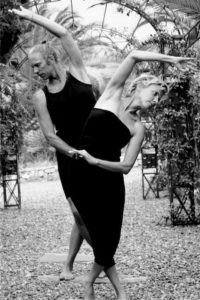Blog for July. – By Sadhita. All photos by Sadhita. All rights reserved.
In the last blog from Bodhiyoga we discussed in outline some of the main ideas that make up those which Bodhiyoga present in their courses as its main body of teaching i.e. awareness teaching based in the Buddhist tradition.
In this blog we want to go into the topic of awareness, how one develops it and why it might be important. The traditional model that we are using or the ‘platform’ that Bodhiyoga teaches from both in yoga and meditation is the Satipattana. Satipattana can be translated as: Direct path to awakening (Analayo), Continuous placing of mindfulness onto an object or perhaps we could even describe it as an essential human quality that leads to awakening and freedom at the deepest and most fundamental level of all pertubation and a profound realisation of non-self. That is more a complex description rather than a definition as such. Never the less, when we talk about awareness lets be clear that this teaching invovles the total transformation of our conciousness and that is no small task. To take on the path of transformation requires all of our attention and a heroic spirit that is able to maintain a sense of purpose and direction towards the higher goals of the spiritual life despite the difficulties that we might encounter on the way. Awareness then, in the way that we are talking about it here, is not simply a tool for changing our daily lives in the mundane sense.
In the traditional schema of teaching given by the Buddha on awareness, the body is spoken about explicitly as the foundation for the cultivation of any further awareness. How is that and why is it important? The body forms the basis of our experience in most cases. We identify with and experience our lives mainly through our bodily sensations and interpretations of them. This world then of experience comes from this first level that is the body. In traditional Buddhism the body is refered to as rupa. The word rupa denotes form as in the condensation of energy at the grossest level and has the chariteristic of resistance. In other words, it’s state is not solid and fixed in a permanent sense at all but rather it manifests in this way and is for ever changing. Our body is more ‘plastic’ than we realise. Also our mind is clearly effected by our bodily state and vis-versa. This is an incontravertible fact and has been well documented in the disciplines of nuero-science. Therefore, it is possible to work with and change our state of mind if we work skillfully on our body.
Our body in yoga becomes a very clear and obvious focus for practice. In this aspect of practice we instruct students to be aware of how thier experience is arising throughout the movement of the posture or breathing work. We make the body the point of observation and development for the other aspects of awareness practice that involve sublter levels of capicity to concentrate and stay with experience that is more mental and emotional. Awareness of one’s emotions and thoughts is more advanced because they are much more fluid as experiences. The body then in our approach to yoga is really a training for the mind. What we are concerned with is strenght, flexibility and awareness of mind and mindfuless development. The body in and of itself is a secondary focus in the sense that the outcome we desire is not purley physical although we do not deny it, we also develop the body as well. Exaclty what the connection between mind and body is has been the basis of much speculation and new age conjecture over the years.
We cannot say exactly how it is that mind and body interact, it is something of a mysterious process. We cannot say that they are one and the same thing nor can we say that they are seperate and completely unrelated. This kind of enquiry can become interesting if applied in a contemplative way in our yoga or meditation practice. Rather than trying to speculate endlesslessly about this subject we might be better off looking directly into our experience again and again and asking a question such as “what am I”?
By using the body strongly to focus our mind which invitably is a training for all students, we start to learn how to go into experience and stay with it in a constructive and unambiguos way. Yoga asana when done with the intention to cultivate our mind’s awareness becomes more than just exercise. As the mind’s tendency is to be dispersed and distracted “alighting on whatever it pleases” we therefore need this intitial embodiment training through mindfuless of the Body. With time and practice one can then translate more easily this awarness training of the body to the mind itself, noticing more and more broadly what the mind is doing in any particular moment and having the skill to correct the mind when negative states begin to prevail or when we become reactive. We should never underestimate the power of the habitual tendencies of mind. Using the body then gives us a foothold on our experince. Yoga practice becomes the basis for developing a liking and enjoyment of awareness of the body as yoga tends to leave us with positivily pleasant feelings after and during practice.
Pleasure in the Buddha’s teaching is in no way absent. If you look into the scriptures, you see that in one sense the monks and nuns of the day as well as lay practictioners were pleasure seekers at the highest level. Do we get the impression that it was all austerity and teeth gritting!? Look again! What the Buddha was saying was aim for the highest bliss, overcome your minds tendency to grasp the mundane and hold onto it. Overcome this tendency and aim your energies towards something much more satisfying and lasting. Use the body for a higher purpose, in other words. Make use of this precious human form as is often taught us in Buddhist tradition.
Later on in the practice of Satipattana, we see that from bodily awareness that has different aspects including the breath, movement, posture, reflection on the 4, 5, or 6 elements and recollection that the body is impermanant, we start to turn our attention to feelings. Feelings are not feelings in the common parlance sense. We say “ I feel sad or happy”. In this context we are developing feeling as the first line of experience both physical and mental. When we train ourselves on feeling we train to notice simply if the feeling is pleasant or unpleasant or somewhere in between. We are moslty not even aware of our feelings. Mostly we do not see how our feelings are leading to the unfoldment of other aspects of our experience day in day out hour after hour. Yet we live very much on the basis of what we feel. Awareness brings to light this primary level of human experience and gives us the power to work with it. It is afterall a workable situation.
 Feelings lead to thoughts and emotions – ideas, conjecture dreams, thoughts of the past and future and then motivate us in actions of body speech and mind. That is how fundamental feelings are. This is what is at stake. By practicing awareness, we become the masters rather than the servants of our feelings. There is a wise saying that feelings do not make good leaders, but they are useful servants. This little saying is worthy of reflection and some long thought. How is it that we can go through life being blown about by feeling and not be aware of it. Habit in a word. We have habits and those habits are powerful.
Feelings lead to thoughts and emotions – ideas, conjecture dreams, thoughts of the past and future and then motivate us in actions of body speech and mind. That is how fundamental feelings are. This is what is at stake. By practicing awareness, we become the masters rather than the servants of our feelings. There is a wise saying that feelings do not make good leaders, but they are useful servants. This little saying is worthy of reflection and some long thought. How is it that we can go through life being blown about by feeling and not be aware of it. Habit in a word. We have habits and those habits are powerful.
From a personal experience of practicing these teachings and integrating them into my daily life I have found that I have come to know myself and therefore others better. I have come to appreciate the difficulty in developing awareness as well as the immense benefit in doing so. I have in no way fully accomplished the path, but I feel that through practicing awareness in these different ways, gradually the mind’s tendencies have become better understood and I am less prone to being driven by the powerful negative emotions. Work in progress.
For now we will sum up the other aspects of awareness and then continue another time. From feelings we go to mind in the sense of being mindful of your thoughts, moods, reflections, a category of experience in the traditional text refered to as mind. The next category is known as mind objects and contains a list of things to be aware of as they arise into conciousness and the implications for each of these objects. It is the description of this final section that we will come to in our next blog.